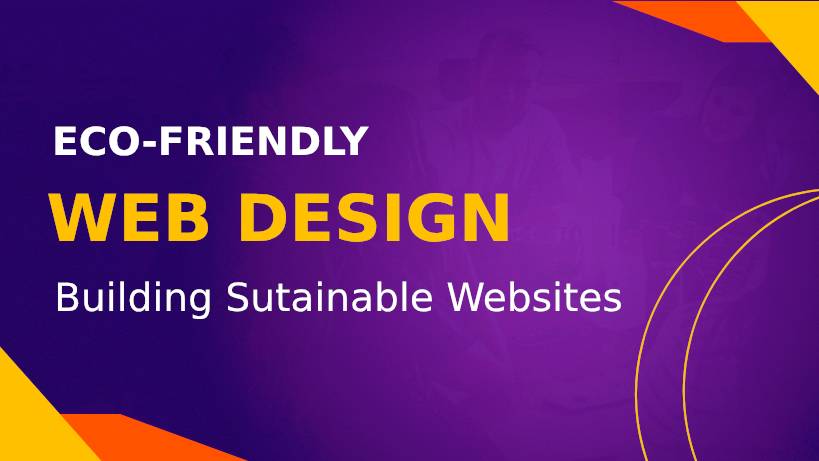
How to Build Websites That Are Both Powerful and Eco-Friendly
As the digital world continues to grow, so does our responsibility to protect the environment. Websites, while integral to modern business operations, often carry an unseen environmental cost: their carbon footprint and energy consumption. Enter sustainable web development—an approach that merges cutting-edge technology with eco-friendly practices. Imagine designing not just visually impressive websites but also eco-friendly websites that support a greener future.
In the past, sustainability in web design was rarely discussed. However, green design has emerged as a pivotal element in sustainable web development. It’s no longer about aesthetics alone; it’s about crafting digital experiences that respect natural resources while engaging users effectively. Businesses now recognize the value of eco-friendly websites, and this guide explores some essential steps to integrate sustainable principles into web development.
The Importance of Sustainable Web Development
The role of sustainable web development has become increasingly significant in a world driven by technology. The global reliance on digital platforms has contributed to an alarming rise in the environmental impact of online activities.
Every website requires energy to function, and much of this energy comes from non-renewable fossil fuels. These energy sources emit greenhouse gases that exacerbate climate change. By incorporating eco-friendly practices, web developers can significantly reduce the carbon emissions associated with their projects.
Beyond its environmental benefits, green design also improves the user experience. Websites that load quickly and run efficiently create positive interactions while consuming less energy. This combination of performance and sustainability is increasingly appealing to modern users.
From a business perspective, adopting sustainable web development provides a competitive advantage. Brands that prioritize eco-friendly practices are better positioned to attract environmentally conscious consumers, building loyalty and trust.
Understanding the Environmental Impact of Traditional Web Development
Traditional web development often fails to account for its environmental impact, which is becoming a critical issue. Hosting servers are a primary contributor to this problem, as they operate 24/7 and consume vast amounts of electricity.
Most of this electricity is generated from non-renewable resources, further increasing the carbon footprint of websites. Additionally, servers produce heat that must be managed with energy-intensive cooling systems.
Poor web design choices, such as large, unoptimized images and heavy scripts, exacerbate these problems. Such elements increase page loading times and demand additional processing power, resulting in greater energy consumption.
The disposal of outdated hardware used in traditional web hosting creates another environmental concern. This electronic waste often contains hazardous materials that can harm ecosystems if not handled properly. Addressing these issues is essential for advancing sustainable web development.
Eco-Friendly Practices for Website Design and Development
Eco-friendly practices are integral to reducing the environmental footprint of web development. By focusing on optimization and efficiency, developers can create sustainable websites that prioritize both performance and sustainability.
One key strategy is optimizing media files. Large images and videos are notorious for increasing energy consumption. Compressing these files using tools like TinyPNG can significantly reduce file sizes without compromising quality.
Minimalistic design principles are another cornerstone of green design. Simpler layouts with fewer elements not only improve user experience but also reduce server requests, aligning with eco-friendly practices.
Incorporating dark mode is a modern approach to sustainable web development. This feature reduces power consumption on OLED screens, making websites more energy-efficient.
Lazy loading is another effective technique. By loading content only when needed, developers can reduce bandwidth usage and improve site performance, supporting the goals of eco-friendly websites.
Efficient Coding for Sustainable Web Development
Efficient coding is a critical component of sustainable web development. Well-written code ensures that websites function smoothly while consuming minimal resources.
Developers should prioritize clean, concise code that avoids redundancy. By minimizing CSS, JavaScript, and HTML files, websites can load faster and require less energy to operate.
Caching is another important practice in eco-friendly web design. It stores frequently accessed data locally, reducing server requests and improving page load times.
Choosing sustainable coding languages that optimize energy usage is another way to align with green design principles. By adopting efficient frameworks, developers can create websites that are both powerful and sustainable.
The Role of Green Hosting in Sustainable Web Development
Green hosting plays a vital role in minimizing the environmental impact of websites. Hosting providers that use renewable energy sources like wind, solar, or hydroelectric power align directly with sustainable web development goals.
Green hosting companies often implement energy-efficient technologies to reduce electricity usage. Some providers go further by participating in reforestation projects or investing in carbon offset initiatives.
Switching to eco-friendly hosting not only benefits the planet but also reflects positively on a brand’s commitment to sustainability. This choice resonates with environmentally conscious audiences and supports the broader movement toward eco-friendly websites.
Educating Clients About Sustainable Web Development
Educating clients about the benefits of sustainable web development is essential for promoting widespread adoption. Many businesses focus solely on aesthetics or functionality without understanding their website’s environmental impact.
Developers can start by explaining the advantages of eco-friendly websites. Highlight how features like faster loading times and reduced energy consumption improve user satisfaction while supporting sustainability.
Providing real-world examples and success stories is another effective way to convey the value of green design. Showcase measurable results, such as energy savings or increased customer engagement, to illustrate the impact of sustainable practices.
Case Studies: Successful Eco-Friendly Websites
Several organizations have successfully implemented sustainable web development principles, setting an example for others:
- Ikea: The brand’s website combines energy-efficient features with user-friendly design, highlighting the potential of eco-friendly websites.
- WWF (World Wildlife Fund): Through renewable energy hosting and minimalistic design, WWF demonstrates its commitment to green design and sustainability.
- Patagonia: With fast-loading pages and low-energy hosting solutions, Patagonia effectively integrates environmental storytelling with sustainable web development.
Reducing Digital Carbon Footprints Through Sustainable Web Development
Reducing the digital carbon footprint is a core goal of sustainable web development. Every optimization, from compressing images to adopting green hosting, contributes to this reduction.
By focusing on energy efficiency and eco-friendly practices, developers can significantly lower the environmental impact of their projects. These efforts also enhance the performance and accessibility of eco-friendly websites, creating a win-win situation.
Creating a More Environmentally Conscious Internet
The future of the internet depends on widespread adoption of sustainable web development. As more businesses embrace eco-friendly practices, the digital landscape will become a more sustainable space.
Developers, designers, and businesses must collaborate to prioritize green design principles. Together, they can reduce energy consumption, lower carbon emissions, and create websites that reflect a commitment to environmental stewardship.
Conclusion
Sustainable web development is no longer optional—it’s a necessity in today’s environmentally conscious world. By adopting eco-friendly practices, businesses can reduce their digital carbon footprint while delivering exceptional user experiences.
Educating clients, leveraging green hosting, and optimizing web design are essential steps toward creating a sustainable digital future. Together, developers and businesses can champion green design, making the internet a more environmentally responsible space.
Let’s commit to building a greener tomorrow—one sustainable website at a time.
Join Us in Building a Greener Web! 🌱💻 At AnchorPoints, we’re committed to creating sustainable, high-performance websites that reduce environmental impact. Ready to make your website eco-friendly? Contact us today to optimize your digital presence with green hosting, energy-efficient coding, and minimal design. Let’s build a cleaner, faster, and more sustainable internet—together! 🚀🌍






